VW ID.7 vs Polestar 4 – Differences & prices compared
Compare performance, boot space, consumption and price in one view.
Find out now: which car is the better choice for you – VW ID.7 or Polestar 4?
The VW ID.7 (Hatchback) comes with a Electric engine and Automatic transmission. In comparison, the Polestar 4 (SUV) features a Electric engine with Automatic transmission.
When it comes to boot capacity, the VW ID.7 offers 532 L, while the Polestar 4 provides 526 L – depending on how much space you need. If you’re looking for more power, decide whether the 340 HP of the VW ID.7 or the 544 HP of the Polestar 4 suits your needs better.
In terms of consumption, the values are 13.60 kWh per 100 km for the VW ID.7, and 17.80 kWh for the Polestar 4.
Price-wise, the VW ID.7 starts at 46300 £, while the Polestar 4 is available from 53100 £. Compare all the details and find out which model fits your lifestyle best!
In the battle of electric sedans, the VW ID.7 and Polestar 4 bring their own strengths to the table. The ID.7 boasts an impressive range and spacious interior, making it a practical choice for long-distance travel. On the other hand, the Polestar 4 shines with its striking design and dynamic performance, appealing to those who value style and driving excitement.
VW ID.7
The VW ID.7 represents a significant step forward in Volkswagen's electric vehicle lineup, offering an elegant design combined with advanced technology features. This electric saloon showcases a sleek aerodynamic profile, prioritising both performance and efficiency. Inside, drivers will appreciate the spacious and modern cabin, equipped with intuitive controls and connectivity features for a seamless driving experience.
details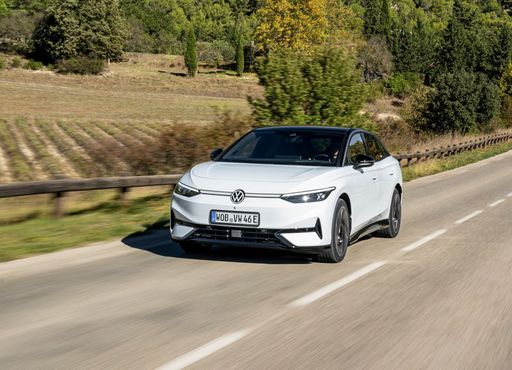 @ Volkswagen.de
@ Volkswagen.de
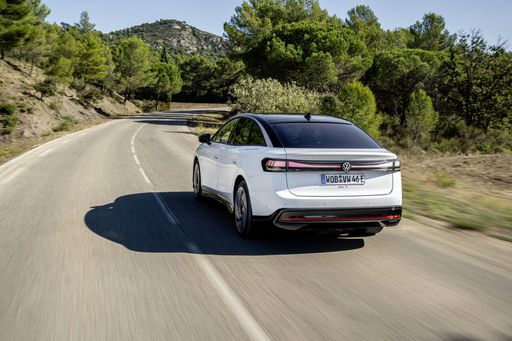 @ Volkswagen.de
@ Volkswagen.de
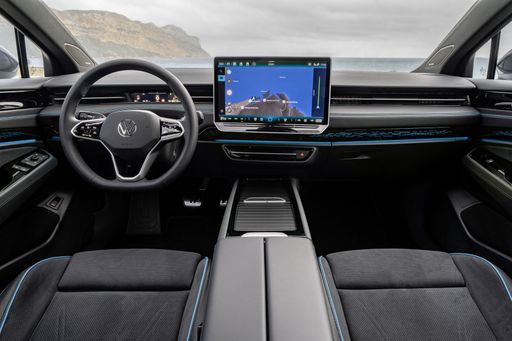 @ Volkswagen.de
@ Volkswagen.de
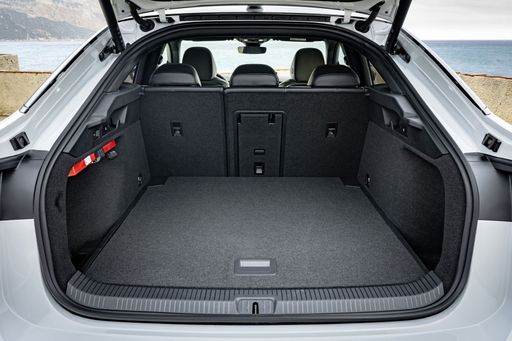 @ Volkswagen.de
@ Volkswagen.de
Polestar 4
The Polestar 4 embodies a seamless blend of cutting-edge technology and sophisticated design, establishing itself as a prominent contender in the modern electric vehicle market. Its elegant exterior lines are complemented by an interior that prioritises both luxury and sustainability, offering a serene driving experience. With its focus on innovation, the Polestar 4 continues to push the boundaries of performance, setting a new standard for what an electric car can achieve.
details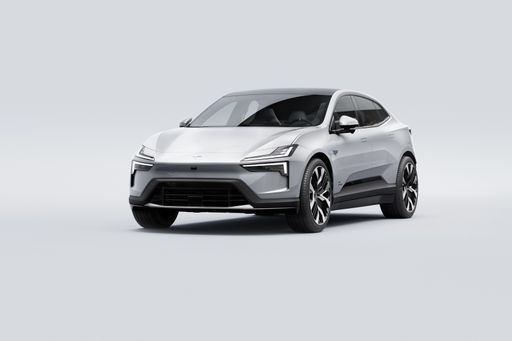 @ media.polestar.com
@ media.polestar.com
 @ media.polestar.com
@ media.polestar.com
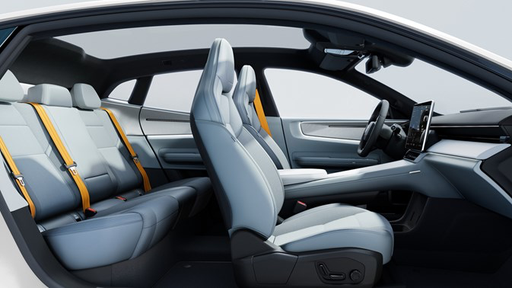 @ media.polestar.com
@ media.polestar.com
Voltage and Style: A Deep Dive into VW ID.7 vs. Polestar 4
As the electric vehicle (EV) market accelerates, two contenders that are making waves are the VW ID.7 and the Polestar 4. Each embodies a distinct take on electric mobility, with unique features, engine specifications, and driver experiences that cater to different demographics. In this article, we will explore how these two electric vehicles compare on several key fronts, including performance, design, technology, and overall efficiency.
Performance: Power Meets Precision
When it comes to performance, the Polestar 4 takes the crown with its powerful engine configurations. With options offering up to 544 horsepower and 686 Nm of torque, it boasts impressive acceleration capabilities, reaching 0-100 km/h in just 3.8 seconds. In contrast, the VW ID.7 offers a solid power range from 286 HP to 340 HP, along with 545 Nm of torque, achieving 0-100 km/h in a commendable 5.4 to 6.6 seconds, depending on the model variant.
Both vehicles feature automatic transmissions with reduction gearboxes for smooth and efficient acceleration. The Polestar 4’s top speed hits 200 km/h, while the ID.7 is capped at 180 km/h, appealing to those who prioritize high-speed performance.
Electric Range: Longevity on the Road
Range anxiety can deter potential EV buyers, but both models deliver impressive electric ranges. The ID.7 is equipped with two battery options: a robust 77 kWh variant that offers up to 618 km, and an 86 kWh version that can reach 709 km in optimal conditions. On the other hand, the Polestar 4, powered by a 94 kWh battery, promises ranges from 590 to 620 km, positioning itself as a viable long-distance travel option.
Efficiency and Consumption: Maximizing Every Kilowatt
The energy consumption rates reflect the efficiency of these electric vehicles. The VW ID.7 proves itself with consumptions ranging between 13.6 to 16.2 kWh/100 km, highlighting its efficiency compared to the Polestar 4, which has figures between 17.8 to 18.7 kWh/100 km. This gives the ID.7 a slight edge in terms of energy conservation, crucial for environmentally-conscious consumers.
Design and Comfort: Ergonomic Experiences
From a design perspective, both vehicles present distinct styles that cater to their target audience. The VW ID.7, with its hatchback design, boasts a sleek, modern aesthetic that exudes sophistication. Its interior offers an expansive trunk capacity of 532 liters, making it practical for daily use or road trips.
On the flip side, the Polestar 4, designed as a sporty SUV, stands out with its more aggressive stance and larger dimensions. While slightly shorter at 4840 mm in length compared to the ID.7’s 4961 mm, the Polestar compensates with a wider frame (2008 mm) and a trunk capacity of 526 liters, ideal for adventurous journeys.
Technological Innovations: The Future in Your Hands
Both the VW ID.7 and Polestar 4 prioritize technology, integrating smart, user-friendly interfaces that enhance the driving experience. The ID.7 is equipped with the latest VW infotainment system, featuring intuitive navigation, connectivity options, and driver assistance systems that focus on safety and ease of use.
Meanwhile, the Polestar 4 doesn’t fall short, coming with a premium infotainment suite that merges Google services with vehicle functionalities. This includes voice commands, real-time traffic data, and advanced safety features that allow for an effortless, connected driving experience.
Conclusion: Choosing Your Perfect EV Partner
The choice between the VW ID.7 and Polestar 4 ultimately boils down to the driver’s personal preferences and priorities. For those who prioritize efficiency, a solid range, and modern design, the ID.7 is a commendable choice. However, if performance and a sporty SUV aesthetic are paramount, the Polestar 4 stands out as a thrilling option.
As the automotive landscape continues to evolve toward an electrified future, both the VW ID.7 and Polestar 4 demonstrate that electric vehicles can marry performance with sustainability, encapsulating the best of modern engineering.

|

|
|
|
|
Costs and Consumption |
|
|---|---|
|
Price
46300 - 54100 £
|
Price
53100 - 59900 £
|
|
Consumption L/100km
-
|
Consumption L/100km
-
|
|
Consumption kWh/100km
13.6 - 16.2 kWh
|
Consumption kWh/100km
17.8 - 18.7 kWh
|
|
Electric Range
595 - 709 km
|
Electric Range
590 - 620 km
|
|
Battery Capacity
77 - 86 kWh
|
Battery Capacity
94 kWh
|
|
co2
0 g/km
|
co2
0 g/km
|
|
Fuel tank capacity
-
|
Fuel tank capacity
-
|
Dimensions and Body |
|
|---|---|
|
Body Type
Hatchback
|
Body Type
SUV
|
|
Seats
5
|
Seats
5
|
|
Doors
5
|
Doors
5
|
|
Curb weight
2184 - 2328 kg
|
Curb weight
2230 - 2355 kg
|
|
Trunk capacity
532 L
|
Trunk capacity
526 L
|
|
Length
4961 mm
|
Length
4840 mm
|
|
Width
1862 mm
|
Width
2008 mm
|
|
Height
1535 - 1536 mm
|
Height
1534 mm
|
|
Payload
456 - 462 kg
|
Payload
455 kg
|
Engine and Performance |
|
|---|---|
|
Engine Type
Electric
|
Engine Type
Electric
|
|
Transmission
Automatic
|
Transmission
Automatic
|
|
Transmission Detail
-
|
Transmission Detail
-
|
|
Drive Type
Rear-Wheel Drive, All-Wheel Drive
|
Drive Type
All-Wheel Drive, Rear-Wheel Drive
|
|
Power HP
286 - 340 HP
|
Power HP
272 - 544 HP
|
|
Acceleration 0-100km/h
5.4 - 6.6 s
|
Acceleration 0-100km/h
3.8 - 7.1 s
|
|
Max Speed
180 km/h
|
Max Speed
200 km/h
|
|
Torque
545 - 679 Nm
|
Torque
343 - 686 Nm
|
|
Number of Cylinders
-
|
Number of Cylinders
-
|
|
Power kW
210 - 250 kW
|
Power kW
200 - 400 kW
|
|
Engine capacity
-
|
Engine capacity
-
|
General |
|
|---|---|
|
Model Year
2023 - 2024
|
Model Year
2024
|
|
CO2 Efficiency Class
A
|
CO2 Efficiency Class
A
|
|
Brand
VW
|
Brand
Polestar
|
VW ID.7
Introducing the VW ID.7: A Game-Changer in the Electric Car Market
The VW ID.7 represents Volkswagen's commitment to innovation and sustainability in the automotive market. This all-electric vehicle stands out not only for its sleek design but also for its impressive array of technological advancements. In this article, we delve into the technical specifications and innovations that make the ID.7 a remarkable addition to Volkswagen's electric vehicle lineup.
Power and Performance
Under the bonnet, the VW ID.7 is powered by a range of electric motors, offering horsepower between 286 and 340 PS. This provides the perfect blend of power and efficiency, making it an ideal choice for both city driving and long-distance journeys. With a top speed of 180 km/h and a lightning-fast acceleration from 0 to 100 km/h in just 5.4 seconds, the ID.7 doesn’t compromise on performance.
Impressive Range and Efficiency
The VW ID.7 redefines what it means to travel efficiently. Depending on the model, the ID.7 offers an electric range between 595 and 709 km on a single charge, setting new benchmarks for the industry. With energy consumption as low as 13.6 kWh per 100 km, it is one of the most energy-efficient vehicles in its class, making it both environmentally friendly and cost-effective for everyday use. The ID.7 boasts a CO2 efficiency class of A, reflecting its zero-emission status.
Advanced Technology and Safety Features
Volkswagen has equipped the ID.7 with cutting-edge technology designed to enhance the driving experience. The car features advanced driver assistance systems, including adaptive cruise control and lane-keeping assistance. Moreover, its infotainment system is state-of-the-art, offering seamless connectivity and a user-friendly interface. Safety features are also top-notch, ensuring peace of mind for drivers and passengers alike.
Design and Comfort
The ID.7's design is both futuristic and practical. Its streamlined body provides a stylish exterior, while the interior is spacious and comfortable, accommodating up to five passengers effortlessly. With a generous boot capacity of 532 litres, there is plenty of storage for all your needs. The ID.7’s dimensions, measuring 4961 mm in length and 1862 mm in width, make it a substantial vehicle that commands attention on the road.
Efficient Price Point
Despite its high-tech features and impressive performance, the VW ID.7 maintains a competitive price range, starting from €53,995. This makes it accessible to a wide range of customers seeking an eco-friendly vehicle without breaking the bank. Additionally, with monthly costs ranging between €1,197 and €1,372, it's a practical choice for those considering long-term electric vehicle ownership.
Conclusion
In conclusion, the VW ID.7 is a testament to innovation in the electric vehicle sector. Its combination of power, range, and technology sets a new standard for what drivers can expect from an electric car. As Volkswagen continues to pave the way for electric mobility, the ID.7 stands as a beacon of what's possible when cutting-edge technology meets sustainable driving practices.
Polestar 4
Introducing the Polestar 4: A New Era for Electric SUVs
The Polestar 4 marks a significant milestone in the realm of electric vehicles, epitomising cutting-edge technology and innovative design. This new player in the SUV market combines sustainability with high-performance capabilities, making it a desirable option for eco-conscious enthusiasts who refuse to compromise on power and luxury.
Impressive Power and Range
Under its sleek exterior, the Polestar 4 offers a choice between two powertrains. For those seeking maximum performance, the dual motor all-wheel drive configuration delivers an astounding 544 PS, propelling the vehicle from 0 to 100 km/h in a mere 3.8 seconds. Meanwhile, the rear-wheel-drive variant, equipped with a single motor, offers 272 PS and achieves 0 to 100 km/h in 7.1 seconds. Both versions boast impressive efficiency, with energy consumption figures of 17.8 to 18.7 kWh/100km, supporting a range of up to 620 km.
Advanced Battery and Charging Capabilities
Built on a robust 94 kWh battery, the Polestar 4 ensures extended travel without frequent charging stops. The advanced battery technology associated with this model not only offers longevity but also supports rapid charging times, making it convenient for long journeys and daily commutes alike. The electric SUV is a testament to Polestar's commitment to reducing environmental impact without sacrificing power.
Intelligent Design and Aerodynamics
With dimensions of 4840 mm in length, 2008 mm in width, and 1534 mm in height, the Polestar 4 is a spacious five-seater designed for comfort and functionality. The vehicle is meticulously crafted to optimise aerodynamics, reducing drag and enhancing efficiency. A generous boot capacity of 526 litres further adds to the practicality of this electric SUV, proving it is as versatile as it is stylish.
Innovative Interiors and Technology
Inside, the Polestar 4 boasts a minimalistic yet sophisticated cockpit, integrating cutting-edge technology with user-friendly features. The infotainment system is seamlessly designed to offer an intuitive user experience, providing drivers with easy access to navigation, entertainment, and vehicle diagnostics. Advanced safety features, powered by state-of-the-art software, ensure peace of mind for all occupants.
Commitment to Sustainability
Polestar continues to champion sustainability through its zero CO2 emissions target, offering the Polestar 4 with a CO2-efficiency class of A. The brand’s mission of promoting a greener future is embodied in this model, combining innovative materials and eco-friendly practices in its production processes.
Conclusion: A Glimpse into the Future of Driving
The Polestar 4 sets a new standard for what can be achieved in the world of electric SUVs. It is a perfect blend of luxury, performance, and sustainability, all packaged in a sleek and modern design. As we move towards a more electrified future, the Polestar 4 stands out as a beacon of what the automotive world can achieve when innovation meets ecological responsibility.
Which drive types are available for the VW ID.7?
Available as Rear-Wheel Drive or All-Wheel Drive.
The prices and data displayed are estimates based on German list prices and may vary by country. This information is not legally binding.
